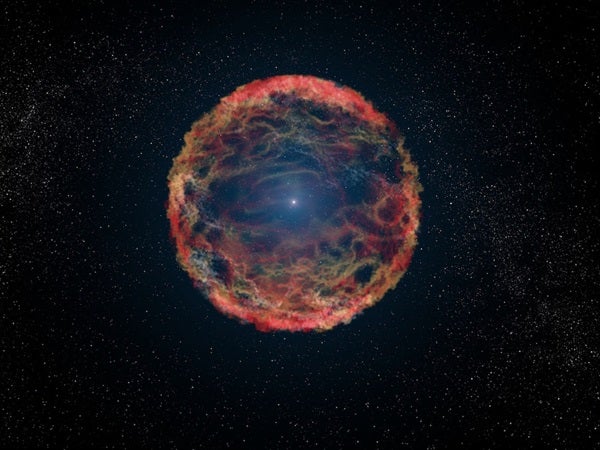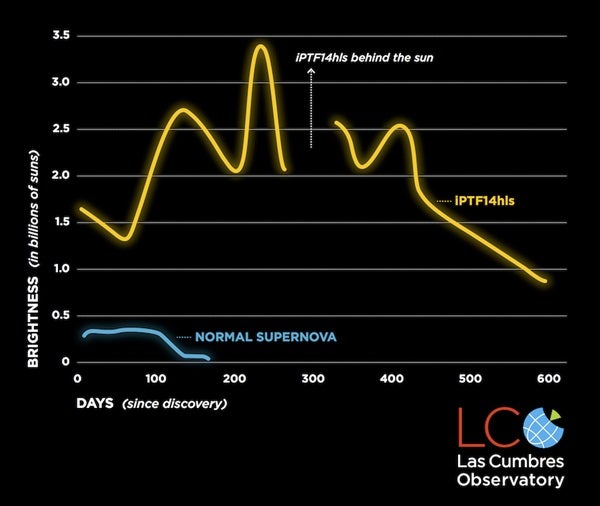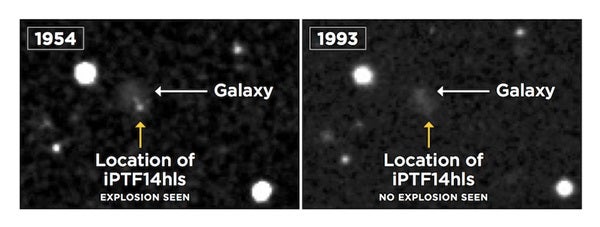That is, until now.
For the first time, astronomers have discovered a star that has gone supernova more than once. This so-called “zombie star” — which exploded at least twice in the last 60 years alone — has baffled scientists by challenging many of the existing theories about how massive stars end their lives.
“This supernova breaks everything we thought we knew about how they work,” said the study’s lead author Iair Arcavi, a NASA Einstein Postdoctoral Fellow at the University of California-Santa Barbara and Las Cumbres Observatory, in a press release. “It’s the biggest puzzle I’ve encountered in almost a decade of studying stellar explosions.”
The undying star, named iPTF14hls, was first discovered in September 2014 by the Palomar Transient Factory (PTF), a fully automated, wide-field survey designed to spot cosmic objects that vary in brightness over time — such as variable stars, transient objects, and, of course, supernovae.
Although Supernova iPTF14hls initially faded after its 2014 explosion, within a few months it began to mysteriously grow brighter again. Over the course of three years, iPTF14hls fluctuated between bright and dim at least five separate times.
“This [was] one of those head-scratcher type of events,” said co-author Peter Nugent, a senior scientist at Lawrence Berkeley National Laboratory. “At first we thought it was completely normal and boring. Then it just kept staying bright, and not changing, for month after month.”
When the astronomers realized iPTF14hls was not an average supernova, they decided to go back and search through archival data. The researchers were flabbergasted when they found that in 1954, another explosion was recorded in the exact same location as iPTF14hls. Somehow, the star survived its first explosion, waited 60 years, and then exploded again.
“According to this theory, it is possible that this was the result of a star so massive and hot that it generated antimatter in its core,” said co-author Daniel Kasen, a professor of physics and astronomy at the University of California-Berkeley. “That would cause the star to go violently unstable, and undergo repeated bright eruptions over periods of years.” The authors of the study calculated that before the first explosion, the star was at least 50 times as massive as the Sun (and likely larger).
“These explosions were only expected to be seen in the early universe and should be extinct today,” said co-author Andy Howell, leader of the LCO supernova group. “This is like finding a dinosaur still alive today. If you found one, you would question whether it truly was a dinosaur.”
Using LCO’s global telescope network, which is specifically designed for sustained observations, astronomers will continue to monitor iPTF14hls for changes in brightness over time.
“We could not have kept tabs on iPTF14hls for this long and collected data that challenges all existing supernova theories if it weren’t for the global telescope network,” said Arcavi. “I can’t wait to see what we’ll find by continuing to look at the sky in the new ways that such a setup allows.”












